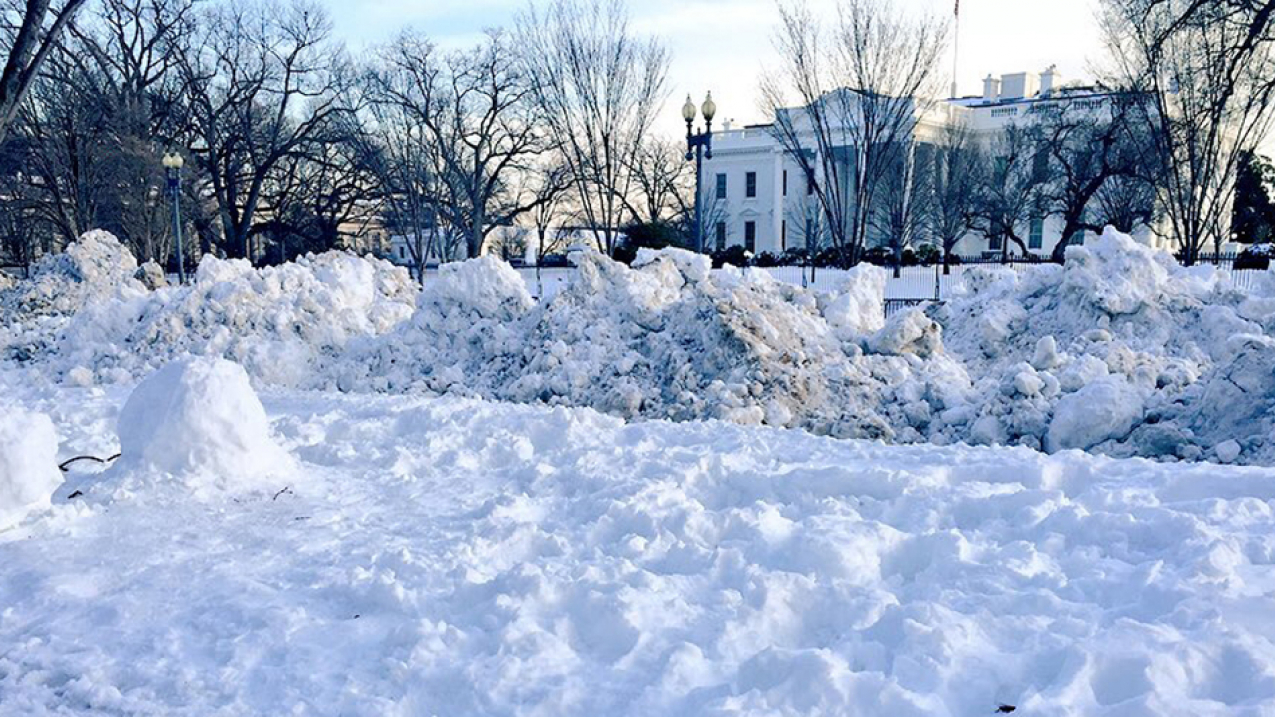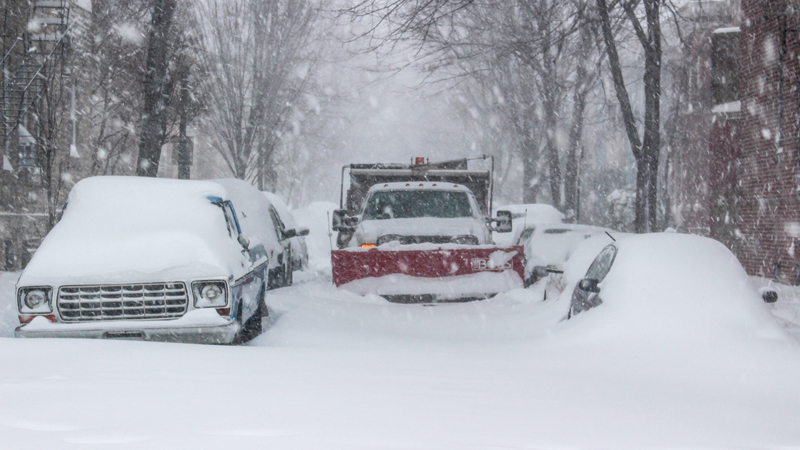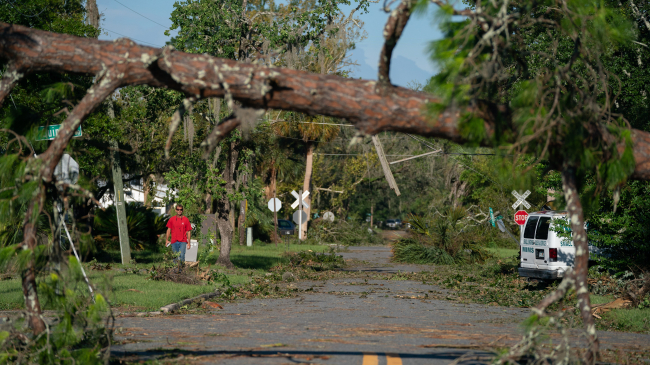NYC total adjusted up to 27.5 inches for new record, Newark reading invalidated as too high
A NOAA review of preliminary snow measurements from the Jan. 22-23 East Coast blizzard validated the 17.8 inch reading at Ronald Reagan Washington National Airport and found the readings for New York’s Central Park and Newark International Airport in New Jersey to be inaccurate.

Snow piles in front of the White House in the District of Columbia following the January 2016 blizzard. (Image credit: NOAA/Joe Flood)





